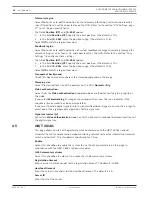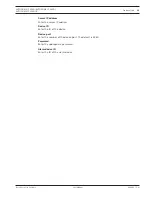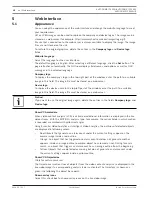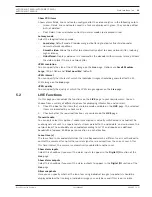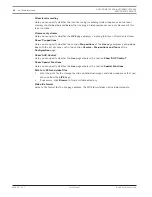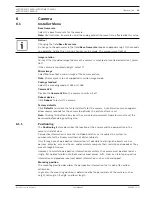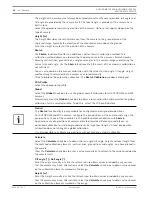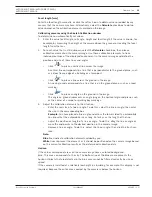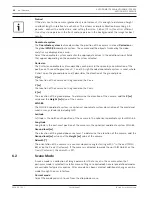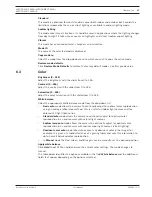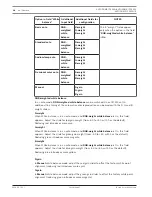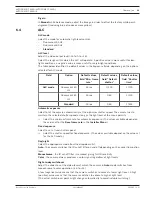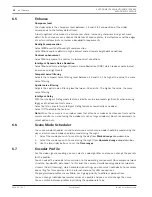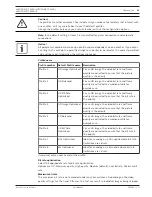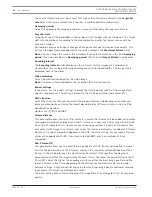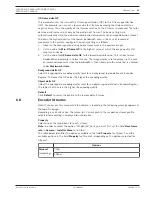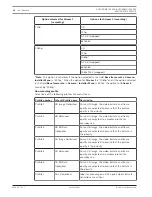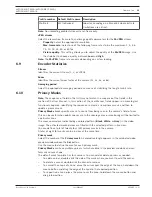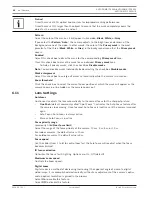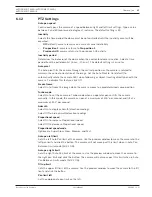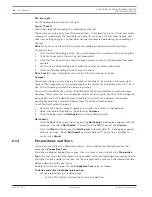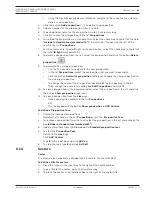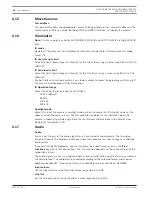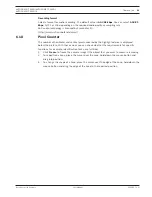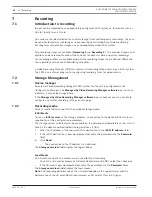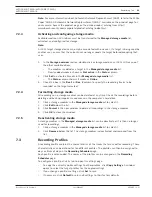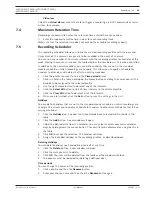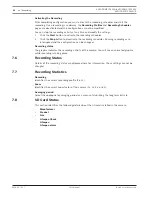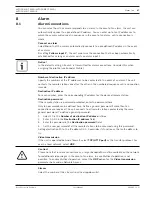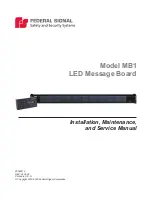
32
en | Camera
AUTODOME IP 4000i/AUTODOME IP 5000i/
AUTODOME IP 5000i IR
2018.05 | 1.1 |
User Manual
Bosch Security Systems
The value entered here must be at least 10% higher than the value entered in the
Target bit
rate
field. If the value entered here is too low, it will be adjusted automatically.
Averaging period
Select the appropriate averaging period as a means of stabilizing the long term bit rate.
Target bit rate
To optimize use of the bandwidth in the network, limit the data rate for the device. The target
data rate should be set according to the desired picture quality for typical scenes with no
excessive motion.
For complex images or frequent changes of image content due to frequent movements, this
limit can temporarily be exceeded up to the value entered in the
Maximum bit rate
field.
Note
: You can change the value in this field only if you select a duration in the field
Averaging
period
. If you do not select an
Averaging period
, then the field
Target bit rate
is greyed out.
Encoding interval
The
Encoding interval
slider determines the interval at which images are encoded and
transmitted. This can be particularly advantageous with low bandwidths. The image rate is
displayed next to the slider.
Video resolution
Select the desired resolution for the video image.
Note
: The value in this field adjusts the resolution for SD streams only.
Expert settings
If necessary, use the expert settings to adapt the I-frame quality and the P-frame quality to
specific requirements. The setting is based on the H.264 quantization parameter (QP).
GOP structure
Select the structure that you require for the group of pictures, depending on whether you
place greater priority on having the lowest possible delay (IP frames only) or using as little
bandwidth as possible.
Options are IP, IBP, and IBBP.
I-frame distance
This parameter allows you to set the intervals in which the I-frames will be coded. Auto means
auto mode, whereby the video server inserts I-frames as necessary. Values range from 3 to 60.
An entry of 3 indicates that I-frames are continuously generated. An entry of 4 indicates that
only every fourth image is an I-frame, and so on; the frames in between are coded as P-frames.
Note that the values supported depend on the GOP structure setting. For example, only even
values are supported with IBP; if you have selected IBBP, only 3 or multiples of 3 are
supported.
Min. P-frame QP
This parameter allows you to adjust the image quality of the P-frame and to define the lower
limit for the quantization of the P-frames, and thus the maximum achievable quality of the P-
frames. In the H.264-protocol, the Quantization Parameter (QP) specifies the degree of
compression and thus the image quality for every frame. The lower the quantization of the P-
frame (QP value), the higher the encoding quality (and thus the best image quality) and the
lower the frame refresh rate depending on the settings for the maximum data rate under
network settings. A higher quantization value results in low image quality and lower network
load. Typical QP values are between 18 and 30.
The basic setting Auto automatically adjusts the quality to the settings for the P-frame video
quality.

